“Balance” is a word I use every day. Did you know we can achieve balance and the lives we want to live by changing how we think?
I recently attended a workshop that helped me learn new ways to achieve balance, especially between my mind and my emotions. I flew to Carefree (yes, that’s a real place!), Arizona, to attend “Mind over Matter,” led by one of my favorite teachers and neuroscientists, Dr. Joe Dispenza. There were a lot of other stars in the neuroscience and creative worlds there as well: Dr. Jeffrey Fannin, founder of the Center for Cognitive Enhancement; Dr. Rollin McCraty, executive vice president and director of research for HeartMath; Melissa Waterman, Kirlian photography and GDV specialist (I’ll explain later!); Natalie Ledwell, founder of Mind Movies; and contemplative musician Barry Goldstein.
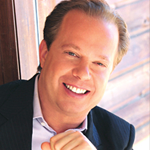
More than 300 people gathered at this event to look for ways to change habits and behaviors—things in their lives they no longer wanted. Some were suffering from chronic pain or disease and looking to heal themselves. “Dr. Joe” set the vibe by telling everyone how the weekend would unfold and how, with each meditation he led, our minds would become less matter and more energy. He talked about how the fewer emotions we have, the higher our energy vibrates and the more open we are to possibility. And he warned us about living in “survival mode,” when everything in our external world dictates our inner world and we’re stuck in the relentless cycle of cause and effect.
The focus of the weekend was to help us change our reality and achieve balance in our lives by changing the way we think. How? If we are mentally signaling our genes by repetitive, habitual thinking we keep creating the same events, which produce the same outcomes. But if we learn to signal our genes in new ways by thinking new thoughts repeatedly, we create new outcomes. The more we practice, the more balanced we become. We begin to open the door to possibility and to the lives we want to create, and eventually we engage in new and better behavior without even trying.
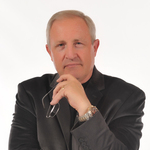
Using brain-mapping and neurofeedback tools, Dr. Jeffrey Fannin worked with Dr. Joe to demonstrate how meditation has a direct impact on our well-being. Through EEG he was able to map brain function, providing information on brain activity in real time. (If you’re interested in finding out more about brain-mapping, there’s a great video here, on the Center for Cognitive Enhancement’s website.)
Dr. Fannin explained the various stages of brain coherence (or incoherence, when the brain isn’t functioning well). He also clarified the meaning of the different levels of brain-wave states:
- Beta: heightened state of alertness and focused concentration
- Alpha: relaxed mental state of awareness typically associated with contemplation, visualization, problem solving, and accessing deeper levels of creativity
- Theta: slower frequency, representing a state of deep relaxation, enhanced creativity, stress relief, light sleep, and dreaming; most often used in meditation
- Delta: the slowest frequency, representing a state of deep, dreamless sleep. Delta brain-wave states have long been associated with healing
- Gamma: the most rapid in frequency, occurring at moments of bursts of insight or high-level information processing
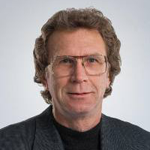
But it wasn’t just about our brains, as demonstrated by Dr. Rollin McCraty from HeartMath, an organization dedicated to helping people reduce stress, self-regulate emotions, and build resilience. We were hooked up to HeartMath devices that interpret heart patterns throughout different times of the day, as well as in the meditative state and during sleep and exercise. Dr. McCraty spoke about how the Earth’s magnetic energy system vibrates at the same frequency as our hearts (1 megahertz) when we’re in coherence or balance. Wow! When brain-wave function, heart wave function, and our energy centers are vibrating at the same coherent frequency, our bodies are in balance.
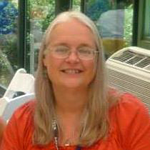
Melissa Waterman provided a different kind of energy-center testing, using Kirlian photography and Gas Discharge Visualization (GDV). She scanned our fingertips (the termination point of all 12 primary acupuncture meridians) and captured, analyzed, and charted our results, creating images that matched our chakras.
Photographs were taken at the start and end of the workshop. In my “before” workshop picture, you can see how certain energy centers were misaligned. In the “after” image, you can see that my chakras are more aligned, indicating a more balanced state of being.
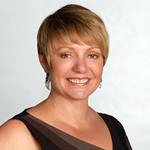
Led by Natalie Ledwell, one of the last treats of the weekend was to make our own mind movies, or high-tech vision boards. We began them at the start of the weekend and throughout the workshop were encouraged to visualize a potential future we wanted to create and add to our vision boards.
The more I watched my mind movie, the more I felt I was living it—creating new thinking, new emotions, and consequently signaling new genes in new ways. The more I signaled those new genes, the stronger my connection to the images became as I recreated my intention: balance.
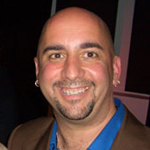
Barry Goldstein set the tone throughout the workshops with the most amazing soundtrack, especially when it came time for meditation. You can hear some of his music here.
By the end of “Mind over Matter” I was living my mind movie and I felt back in balance. The most fascinating thing I learned was how I could change my mind through thought alone! Pretty good stuff, and it’s painless.
How many of you struggle with the concept of living a life of balance? How can you achieve the lives you want by changing your habitual thinking?

Rose Caiola
Inspired. Rewired.

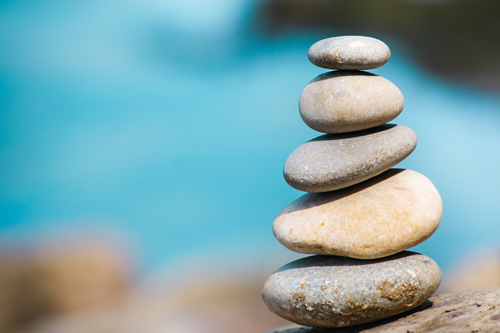

2 Comments
Scott
Thanks Rose,for that share…i was also present at Carefree, az. And indeed was it a great experience. And I can’t wait till the next workshop.